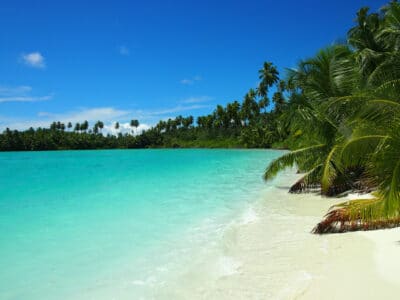Multi-decadal atoll-island dynamics in the Indian Ocean Chagos Archipelago
Mingyue Wu, Virginie K.E. Duvat, & Sam J. Purkis. Multi-decadal atoll-island dynamics in the Indian Ocean Chagos Archipelago. Global and Planetary Change. Vol. 202. (2021)
Please find an excerpt of the full PDF below
Published in Global and Planetary Change
Abstract

This study calls upon recently discovered aerial photographs for two atolls in the Indian Ocean Chagos Archipelago. Pairing these vintage data with modern satellite imagery allows the coastline dynamics of a suite of islands to be quantified over a 36-to-50-yr. period. Peros Banhos represents one of the few atolls globally where natural island dynamics can be appraised; withstanding just one of its 35 islands, this atoll has never been settled by humans. By contrast, Diego Garcia has undergone pronounced anthropogenic change in the last fifty years. Statistics bring new insights to the persistence of these atoll islands under the contemporary conditions of sea level rise. Key findings include: (i) Coastlines facing the prevailing trade winds retreat through time, while those in leeward positions expand; (ii) coastline expansion and retreat are in balance such that total land area of all the considered islands is virtually static over the last 50 years; and, (iii) small islands (<20 ha) are substantially more dynamic than large ones. The stretches of the Diego Garcia coastline in close vicinity to human modification are more likely to suffer erosion than those situated far from human activity, and also substantially more likely to erode, than those of the uninhabited islands of Peros Banhos. A comparison between the behavior of a broad portfolio of islands spanning the Indian and Pacific Oceans emphasizes local factors such as wind direction, to be better determinants of coastline dynamics than global factors, such as the rate of eustatic sea-level rise. In aggregate, our data suggest that atoll islands are likely to persist in the face of accelerating sea-level rise over the next decades, but their high rate of coastline dynamics will challenge human habitability.